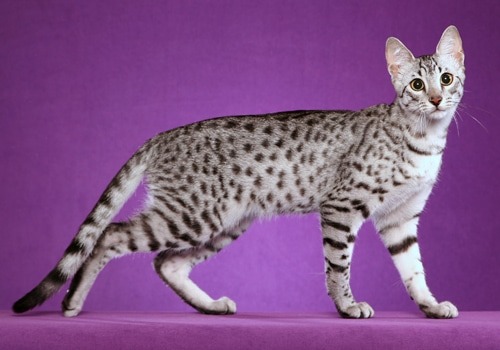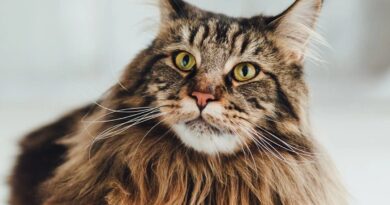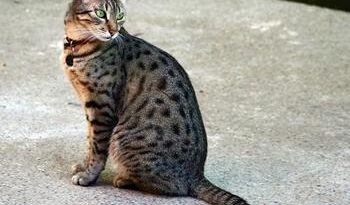Do Egyptian Maus Have 5 Toes on Their Feet? Unveiling the Fascinating Truth
Egyptian Maus are one of the most enigmatic and captivating cat breeds in the world. Known for their sleek bodies, naturally spotted coats, and striking green eyes, they hold a special place in the hearts of feline enthusiasts. But among the many questions surrounding these elegant cats, one peculiar query often arises: Do Egyptian Maus have five toes on their feet? This article dives deep into the anatomy, history, and fascinating features of the Egyptian Mau to uncover the truth about their toes.
The Anatomy of the Egyptian Mau
To answer the question directly, yes, Egyptian Maus have five toes on their front feet and four toes on their hind feet, like most domestic cats. This configuration is standard among nearly all feline breeds, serving practical purposes for balance, movement, and hunting.
Each toe is equipped with retractable claws that the Mau uses for climbing, defending itself, and catching prey. The presence of five toes in the front provides added dexterity, allowing these cats to grasp objects and stabilize themselves while navigating various terrains. The four toes on their hind feet contribute to their exceptional speed and agility—traits for which the Egyptian Mau is renowned.
Why Is Toe Count Important in Cats?
Understanding the toe configuration in cats offers insights into their behavior, evolution, and health. Here’s why the number of toes matters:
- Evolutionary Advantage
The standard toe count of five in the front and four in the back evolved to optimize a cat’s hunting prowess. The additional toe in the front enhances their ability to grip, climb, and manipulate objects, while the streamlined four-toe design in the hind legs supports faster, more efficient running. - Polydactylism in Cats
While Egyptian Maus typically conform to the standard toe count, some cats exhibit a condition called polydactylism—having extra toes. This genetic mutation is more common in certain breeds, like the Maine Coon, but rare in Egyptian Maus. Polydactyl cats often have extra toes on their front paws, making them appear to have “mittens.” - Health Implications
Toe count can also influence a cat’s health. Cats with polydactylism, for example, may face challenges with nail growth and foot alignment. Conversely, cats with standard toe counts, like the Egyptian Mau, benefit from a structure that supports their active lifestyle.
Unique Physical Traits of the Egyptian Mau
While their toe count may align with other domestic cats, the Egyptian Mau stands out in several other ways:
- Spotted Coat Pattern
The Egyptian Mau is the only naturally spotted breed of domestic cat. These spots are random and unique to each cat, much like human fingerprints. This distinctive feature adds to their exotic appeal and historical mystique. - Speed and Agility
The Egyptian Mau holds the title of the fastest domestic cat, capable of reaching speeds of up to 30 miles per hour. Their hind legs, slightly longer than their front legs, give them a cheetah-like stride, allowing for bursts of incredible speed. - “Gooseberry” Green Eyes
One of the most striking features of the Egyptian Mau is their vivid green eyes, often referred to as “gooseberry green.” This trait, combined with their expressive facial markings, lends them an exotic and captivating look. - Skin Fold for Stretch and Speed
Unique to this breed is a loose skin flap extending from the flank to the hind knee, which facilitates greater flexibility and longer strides during running.
The History of the Egyptian Mau
The Egyptian Mau’s connection to ancient Egypt is well-documented, with their lineage tracing back thousands of years. They are often depicted in Egyptian art, hieroglyphs, and tomb paintings, revered for their beauty and hunting skills.
The name “Mau” translates to “cat” in Egyptian, further emphasizing their roots in the region. These cats were considered sacred in ancient Egypt, often associated with the goddess Bastet, the deity of home, fertility, and protection. Some Maus were even mummified alongside their owners, signifying their importance in Egyptian culture.
Behavioral Traits of the Egyptian Mau
Egyptian Maus are not just visually stunning—they also possess a personality that endears them to cat lovers. Their behaviors reflect their unique evolutionary adaptations:
- Highly Intelligent
Maus are quick learners and exhibit problem-solving skills, whether it’s figuring out how to open a door or mastering a new game. - Affectionate Yet Independent
While they enjoy bonding with their human companions, Egyptian Maus also value their independence. They are not overly clingy, making them ideal for households that appreciate a balance between affection and autonomy. - Playful and Energetic
Thanks to their athletic build, Maus love to play and need regular physical activity. They enjoy interactive toys, climbing structures, and spaces where they can sprint and leap.
Common Myths About Egyptian Maus
Given their rich history and exotic appearance, Egyptian Maus are surrounded by myths and misconceptions. Let’s address a few:
- Do They Always Have Spotted Coats?
While spots are a hallmark of the breed, not every Mau has a perfectly spotted coat. Some may have a combination of stripes and spots, depending on their lineage. - Are They Hypoallergenic?
Egyptian Maus are not hypoallergenic, but their fine, silky coat may produce less dander than some other breeds, making them a potential option for people with mild cat allergies. - Are They Descendants of Wild Cats?
While their appearance may resemble wild felines, Egyptian Maus are fully domesticated cats. However, their ancestors may have interbred with African wildcats thousands of years ago.
Caring for an Egyptian Mau
Owning an Egyptian Mau requires understanding their specific needs to keep them healthy and happy:
- Diet
A high-protein diet supports their active lifestyle. Consult your veterinarian to ensure they receive the right balance of nutrients. - Exercise
Provide plenty of opportunities for play and physical activity. Maus thrive in environments with climbing trees, scratching posts, and interactive toys. - Grooming
Their short coat requires minimal grooming—weekly brushing is usually sufficient. Regular nail trimming and dental care are also essential. - Regular Vet Checkups
Like any breed, Maus benefit from routine veterinary care to monitor their overall health and address any issues early.
Conclusion: Do Egyptian Maus Have 5 Toes on Their Feet?
To summarize, Egyptian Maus indeed have five toes on their front feet and four on their hind feet, adhering to the standard feline anatomy. While their toe count may not set them apart, their other traits—speed, beauty, and history—make them one of the most extraordinary breeds in the feline world.
Whether you’re captivated by their ancient lineage, mesmerized by their stunning appearance, or charmed by their playful nature, the Egyptian Mau is a breed that continues to fascinate and delight cat lovers worldwide.




